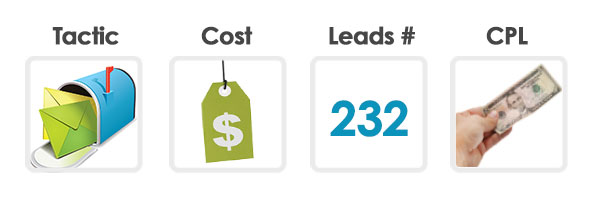Return on investment (ROI) is one of the most important metrics businesses use when determining how to allocate their budget. As marketers, it can seem like we spend most of our time strategizing about the tactics that will yield the best results at the lowest cost to keep key decision-makers happy.
Thankfully, there are many ways for you to maximize your ROI. Let’s take a look at some simple steps marketers should be taking in order to get the most value out of their campaigns.
Understanding ROI
In simple terms, return on investment represents the cost of doing something in order to achieve a desired outcome. But a “good” ROI doesn’t always have to be directly tied to sales and revenue. Depending on what the goals of the campaign are, other leading metrics, including the amount of traffic generated or the number of new leads acquired, can also be good indicators of whether your marketing is effective or not.
In the senior living space, the most common goal our clients have is generating more leads for their sales teams to work. So, the ROI measurement for those clients is based on the marketing tactic’s ability to generate leads.
It’s important to remember that it’s seldom possible to calculate ROI overnight. It takes time (think three months, six months or even a year) to determine the true value of some marketing initiatives. And even then, ROI can be difficult to calculate due to the amount of variables involved.
With that being said, it’s important to set benchmarks for marketing tactics before they launch to help you evaluate whether your investment is paying off. As mentioned earlier, most often the measurement is based on leads.
As such, a common benchmark practice we use is setting cost-per-lead (CPL) goals. According to Enquire Solutions’ latest benchmark report, the senior living communities they partner with saw an average advertisement CPL of $564. Direct mail averaged a CPL of $757. These CPLs are in line with what we typically see for clients as well. Set your own CPL goals so you will have a benchmark to track your results against.
Measuring ROI
Ensuring Measurability
To determine whether your marketing tactics are successful, you have to be able to measure them. It’s a simple thought, but can be complicated to do if you haven’t prepared to measure your tactics correctly.
First, take a look at all of your tactics – your marketing plan – and determine how inquiries will come in (online forms, phone calls, community visits). Then, make sure you put the following measurement efforts in place before the tactics even launch.
- Ensure Google Analytics is set up throughout your website and landing pages. Be sure that all online form submissions have been set up as a goal completion.
- Obtain call tracking phone numbers to be used on traditional marketing (print ads, direct mails, etc.), as well as on the landing pages you are directing your marketing efforts to.
- Be sure that you have entered the source of lead names into your CRM for all marketing tactics so that all inquiries (call in, walk in or online) can be entered accurately into the CRM by sales team members.
- Keep track of all your marketing tactics along with the costs for implementing them. This could be a simple excel spreadsheet or a more formal marketing plan, but this is a key component for calculating the return on investment when the time comes.
The Results Are In!
It’s important to monitor your tactics regularly to ensure they are working well for you and to ensure your tracking efforts are tracking accurately. Once tactics start to launch, results will be seen immediately via Google Analytics and your call tracking provider reports.
After you’ve confirmed inquiries are being generated and tracked, be sure to give the tactics enough time to perform before analyzing the return. Most tactics begin to produce the desired results within a three-month period. It’s recommended that you create a simple ROI report indicating:
- Each marketing tactic
- Cost of each tactic during the time frame being analyzed
- Number of tracked leads generated during that time frame
- Resulting CPL calculation (cost of tactic / number of leads)
Compare your tactic CPL results to your pre-established benchmarks. Try not to be extremely reactive after one ROI analysis and stop something cold turkey just because you experience a lower CPL than the benchmark you set. There are many ways to improve your ROI before scrapping tactics entirely. Be on the lookout for part II of this series where we’ll provide insights on the most effective ways to get the most out of your marketing efforts!
Get More Insights with eNews
Sign up for eNews to keep up with the latest mature marketing insights, as well as the latest trends in the 55+ and senior living industries.





